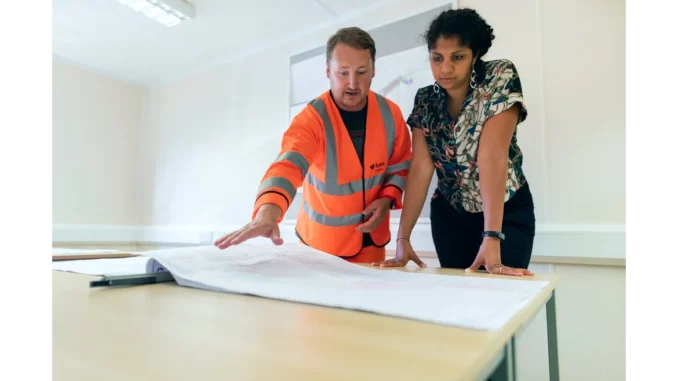
When it comes to achieving building certification standards, the journey often starts with a detailed assessment of indoor air quality (IAQ). For many, this process is not just about ticking boxes but about creating healthier environments for the people who inhabit these spaces. I had the pleasure of speaking with Emily Harper, an IAQ specialist who has been involved in numerous building certification projects, to gain insight into the intricacies of this crucial process.
Air quality is vital in planning. See how Focus360 Energy can assist.
Emily, with her warm demeanour and passion for clean air, began by recounting her initial steps into the world of IAQ certification. “I was drawn to this field because I realised how much time we spend indoors,” she explained. “The air we breathe inside can have significant impacts on our health and well-being.”
To achieve the desired building certification standard, Emily emphasised the importance of starting with a comprehensive assessment. “The initial detailed assessment is crucial,” she noted. “It helps us understand the baseline air quality, identify potential pollutants, and devise strategies to mitigate them.”
During our conversation, Emily highlighted some of the common indoor air pollutants that require monitoring. “Volatile organic compounds, or VOCs, are a big concern,” she said. “They come from everyday products like paints, cleaning supplies, and even furniture. As a building is newly constructed or refurbished, the levels of VOCs and formaldehyde tend to spike.”
However, Emily was quick to point out that these aren’t the only culprits. “Carbon dioxide levels are another key indicator we keep an eye on,” she added. “High levels can indicate poor ventilation, which can affect both comfort and cognitive function.”
Once the initial assessment is completed, Emily stressed the importance of ongoing long-term monitoring. “Buildings aren’t static; they’re dynamic environments,” she explained. “Pollutant levels can fluctuate over time due to changes in usage, occupancy, and even weather conditions.”
This ongoing monitoring is not just about maintaining certification status; it’s about ensuring that the indoor environment remains healthy for its occupants. “Regular IAQ monitoring services allow us to catch any issues early and address them before they become significant problems,” Emily stated.
Emily went on to describe some of the innovative monitoring technologies that have transformed the field. “Today, we have access to real-time monitoring systems that can provide immediate data on various pollutants,” she said. “This technology enables us to make informed decisions quickly and efficiently.”
As our conversation delved deeper into the technical aspects, Emily’s passion for her work became even more evident. “It’s incredibly rewarding to see the difference good air quality can make,” she shared. “Whether it’s improving productivity in an office or creating a more comfortable living environment in a residential building, the benefits are tangible.”
Yet, Emily acknowledged that achieving and maintaining these standards requires collaboration and commitment. “It’s not just about the certification; it’s about fostering a culture of sustainability and health,” she emphasised. “Stakeholders from building owners to facility managers all play a role in this journey.”
Reflecting on her experiences, Emily offered some advice for those embarking on their own IAQ certification journey. “Start with a solid plan,” she advised. “Understand the specific requirements of the certification you’re aiming for, and tailor your assessment and monitoring efforts accordingly.”
She also encouraged embracing innovation and staying informed about the latest developments in IAQ technology. “The field is constantly evolving,” she noted. “Being open to new ideas and approaches can make a significant difference in achieving your goals.”
As our conversation came to a close, Emily left me with a profound thought. “Ultimately, it’s about creating spaces where people can thrive,” she said. “Good air quality is a fundamental aspect of that, and it’s incredibly fulfilling to be part of the solution.”
In recounting Emily Harper’s experiences, it’s clear that achieving building certification standards through IAQ assessment and monitoring is both a science and an art. It requires a deep understanding of pollutants, a commitment to ongoing monitoring, and a collaborative approach to creating healthier indoor environments. For those on this journey, the rewards are well worth the effort.
Tobiasz Karcz


Be the first to comment